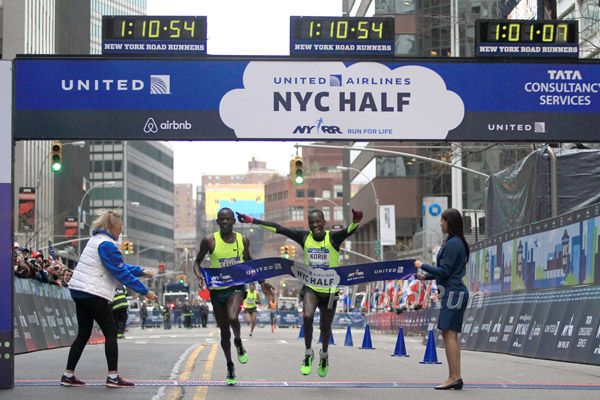
On March 16th, 2025, thousands of runners assembled in Brooklyn’s Prospect Park and tied their shoes for the annual New York City Half Marathon, an iconic 13.1-mile race that has become one of the most eagerly anticipated events in the world of running. This year, over 25,000 participants were drawn to the event, ranging from elite athletes to amateur runners, even including first-timers. There was a clear sense of camaraderie and excitement fueling racers and spectators alike, carrying them through the challenging courses. As usual, spectators lined the streets, holding signs and cheering for both friends and strangers alike. The sheer contagious quality of this event reminded all participants that while running may be a solo activity, racing was an entirely collective experience.
Since its inception in 2006, the NYC Half has grown into an internationally recognized event, offering a more accessible alternative to the full 26.2-mile marathon. For many, it is an opportunity to challenge themselves and celebrate their fitness journey, while to others it serves as a stepping stone towards greater running goals. Organized by The New York Road Runners, it grants participants the rare opportunity to run through some of the city’s most iconic landmarks. Leading runners from Brooklyn’s Prospect Park to Manhattan’s Central Park via the Manhattan Bridge, participants attain a very unique and personal perspective on New York City. On one day every year, runners of all different calibers get the chance to run through the heart of the city and truly experience the qualities that make it so memorable.
The Half was originally created as a more approachable, achievable alternative to the true Marathon. It gives participants a chance to challenge themselves without committing to the full 26.2-mile distance and, for many amateur runners, it serves as a step to reach more significant goals later on. Due to this accessibility, the event has become a staple of New York’s athletic scene, inspiring people from all walks of life to take on the challenge. Top athletes are attracted from all over the world to come and partake in or even just spectate this event.
The race has also had a long-term impact on the New York City community. “A few people I know have run the NYC Half, and they all say the experience is unforgettable,” says a junior on the BSGE track team. “One of my friends said that running it was surreal. The crowds and the energy, it was so much more than a race. It’s really a celebration of New York City itself.”
A sophomore track team member, who hopes to run the Half in the future, said: “It’s inspiring to see so many different people push through the same pain and exhaustion and happiness on the way to the finish line. Everyone is experiencing the same things–together. It makes me want to sign up when I’m older.”
Even among non-runners, the event left an impression. A BSGE teacher who attended the race as a spectator found that “determination is what matters most. It means so much to New Yorkers. We have spirit. We have strength. Running is such an inclusive sport that it doesn’t matter how fast you are. What matters is that you’re willing to show up and keep going.”
A teacher at BSGE with some experience in Track and Field believes that “the Half Marathon allows ordinary people to step into the world of running. Honestly, it’s a gateway and a milestone. Some things can be both.”
While the 2025 race was held on March 16, the NYC Half Marathon’s legacy is firmly rooted in the city’s love of running and embracing diversity, and will be continued and preserved—year after year.